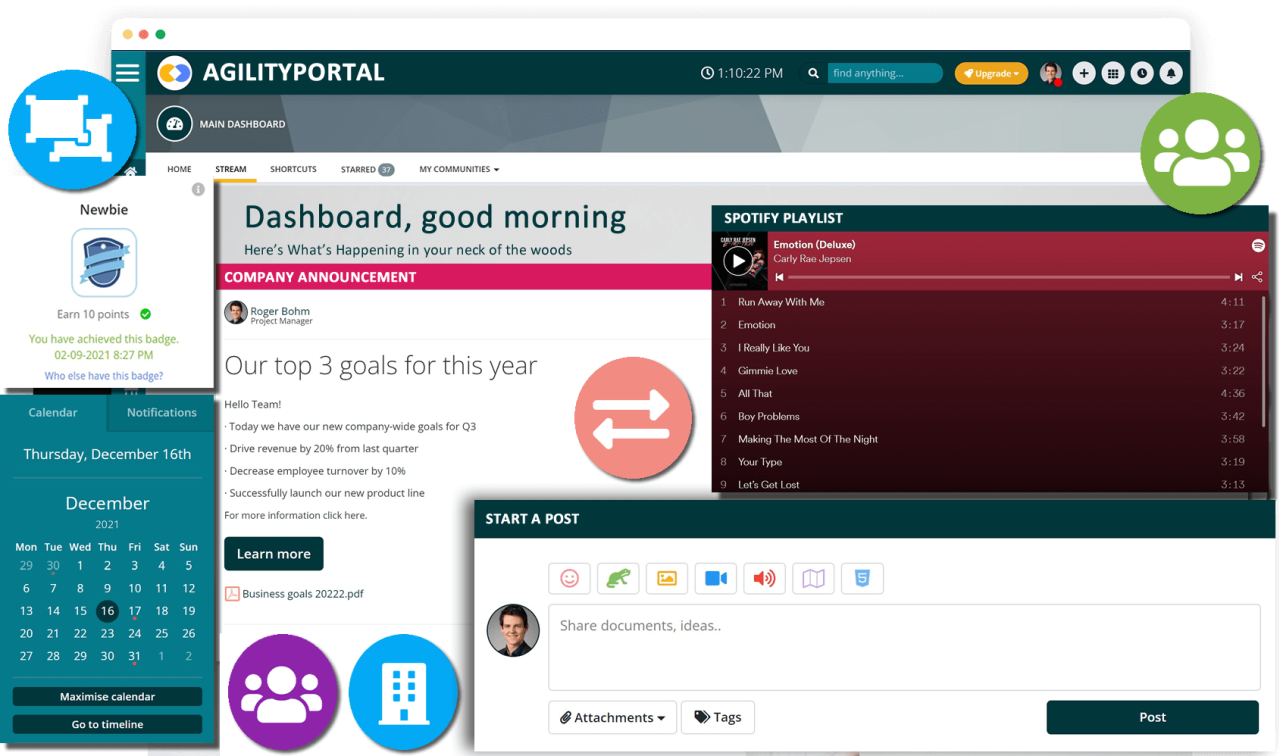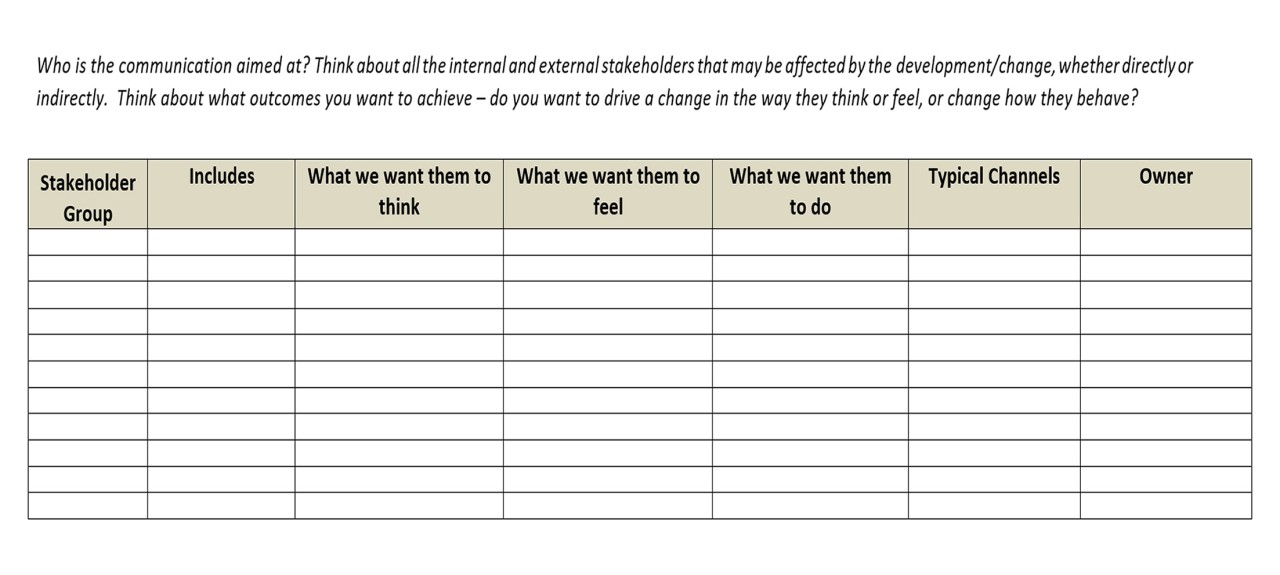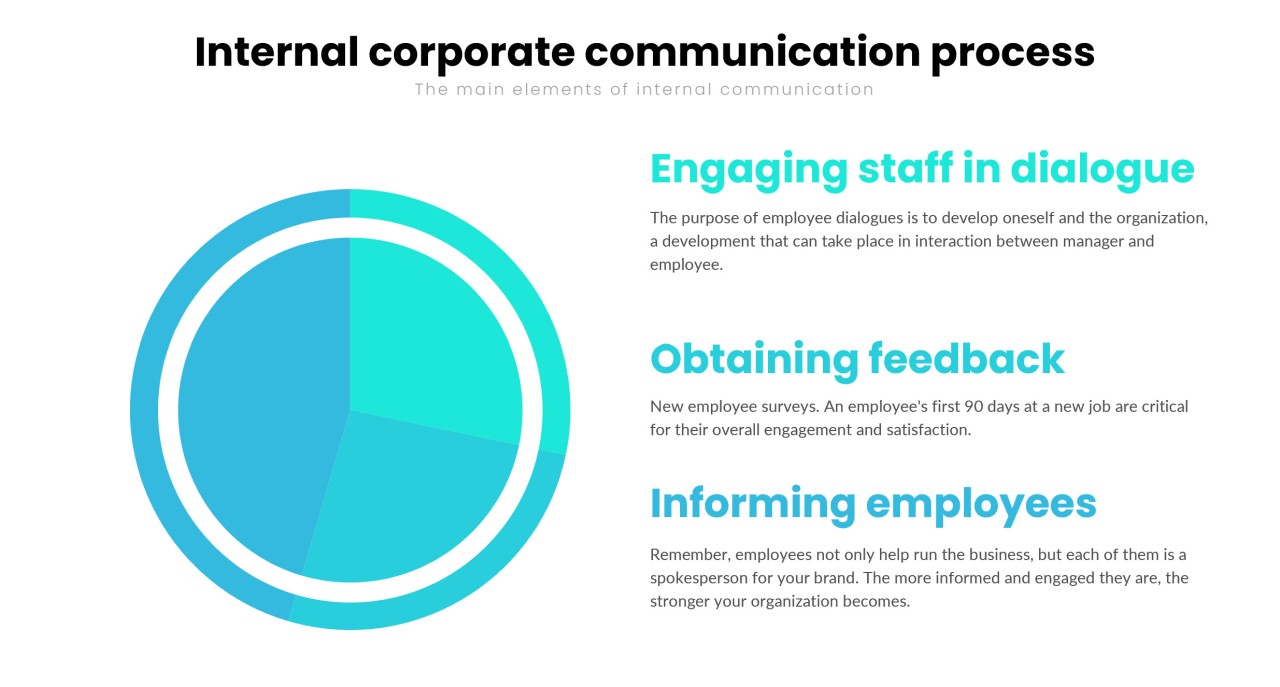Insight Blog
Agility’s perspectives on transforming the employee's experience throughout remote transformation using connected enterprise tools.
6 minutes reading time
(1130 words)
Detailed guidelines about internal communication systems and tips to skyrocket engagement
The difficult aspect is deciding on the appropriate internal communication system for your firm, which takes into account the company's culture as well as the general personality of your employees.
Internal communications that provide employees with real-time information about their company's goals and initiatives can help increase revenue and employee engagement. Internal communications, despite being a crucial element of a company's architecture, may sometimes be overlooked, forcing HR departments to pick up the slack and keep staff engaged.
Companies that continually promote and enhance their internal communications are frequently chosen as employers of choice. Furthermore, organizations with a well-thought-out communication strategy have a 47 percent higher return on investment, lower employee turnover, and more engaged staff.
Internal communication system
Internal communication can make your staff happy, as a result, it can lead to a successful company. Effective communication may be the difference between a flourishing, wealthy firm and dissatisfied, uninspired employees that have a direct and negative impact on business operations, whether you're a company of eight or 800 in manufacturing or financial services.
Employees feel more motivated, engaged, and productive when communication in the workplace is effective and employee-centric. The difficult aspect is deciding on the appropriate internal communication system for your firm, which takes into account the company's culture as well as the general personality of your employees.
Through technology advancements and altering work cultures, the modern workplace is quickly changing. A preoccupation with cooperation has arisen as a result of a focus on efficiency and production. Companies all across the world have hurried to add additional cooperation and communication tools to their arsenals, resulting in a surplus.
- AgilityPortal
- Dropbox
- Google Workspace
- Microsoft 365
- Microsoft Teams
- Zoom
- GoTo
- Webex
- Slack
Internal communication tools
Intranets platforms with social features and newsletters are just a few examples of "internal communication tools." What is the best combo for you? Employees may exchange and access information via an intranet, which is meant as a centralized conduit for internal communications. As a result, an intranet serves as a versatile center for communicators.
Intranets serve as internal "homepages," boosting the exposure of essential corporate alerts in addition to exchanging papers, images, and general information. Employees may access all accessible information through dedicated parts and channels, but they can focus on the topic areas that are important to them.
In an intranet, you may also utilize an instant messaging service. An instant messaging application allows you to interact with others in your organization in real-time and share text, photographs, videos, and web links. It's a more natural and speedier means of interacting that closely resembles technologies we use in our daily lives, such as popular social networking sites.
An intranet may be utilized as a tool for cooperation as well. Any technology that allows many people to view a project, offer input, notes, or provide sign-off is referred to be a collaboration tool. The way collaborative tools are accessed has changed thanks to cloud-based applications. Many current collaboration tools allow numerous users to use them at the same time and include functionality for tracking changes and saving various versions as the project matures and changes.
- Company Newsletters
- Employee Feedback Apps
- Emoji Reactions
- Videos
- Video Conferencing
- Intranet
- Apps
- Forums and Chat
Internal communication plan
A plan is established for the organization's objectives for interacting with workers and outlines the actions necessary to attain those objectives. Your internal communications plan serves as a road map for achieving success in internal communications.
One of the bright spots, particularly early in the epidemic and in the aftermath of societal upheaval, was seeing leaders and communication professionals stand up to the plate-like never before. We witnessed the type of attention and prioritization that is most common in a crisis, with communication that was timely, targeted, and clearly addressed the needs and top questions on employees' minds.
Why is it important?
In order for a company to expand successfully, it must interact with its employees on a regular basis. Employee communications should be interesting and make them feel like they're a part of something greater. Employees are kept aware of current activities and events, as well as future plans, thanks to a well-crafted internal communication plan. It also demonstrates how each member of the organization fits into the overall strategy and the significance of their participation.
You should examine your present position before beginning to build a new internal communications plan. To put it another way, assess the strengths and shortcomings of your present internal communication strategy. How near did your previous strategy bring you to your objectives? Did you have one at all? Even if you don't have a strategy yet, you should think about the following:
- 1) Internal communication metrics
- 2) Identify the target audience
- 3) The Goals
- 4) Method of internal communication
- 5) Send the appropriate message
The particular tactics you are planning to use to improve communication are known as strategies. Most communicators, on the other hand, make the error of jumping from defining goals to deploying methods without first developing a plan.
Always consider the larger picture and attempt to figure out which technique is best for your goals and objectives. Test it as many times as possible. You may narrow down your objectives to the ones that are most successful for your firm after you have particular data.
Template for an internal communication plan
Transparency is the key to good communication. Employees will doubt the value of work if managers and members of leadership assign particular jobs to others that they are not willing to execute themselves. The same may be said of communication. If your company claims to have a transparent and trustworthy culture, those ideals must be articulated consistently as part of an internal communication strategy.
Honesty entails much more than simply stating the truth. Make sure your words and actions are in sync because actions frequently speak louder than words. Employees want to follow a leader that can be honest about their judgments and choices when you demonstrate honest conduct in your workplace. Share both the positive and the bad news in your conversations to reflect that honesty. Employees may surprise you with their answers if they are aware of the challenges they must face.
Here are the contents that can be a part of an internal communication strategy template:
- 1. Goals of your company
- 2. Determine target audience
- 3. Create a message (motivation or call to action)
- 4. Testing the effectiveness
- 5. Notes and suggested changes
Categories
Blog
(2576)
Business Management
(315)
Employee Engagement
(204)
Digital Transformation
(171)
Intranets
(119)
Growth
(116)
Remote Work
(61)
Sales
(48)
Collaboration
(37)
Culture
(29)
Project management
(29)
Customer Experience
(26)
Knowledge Management
(21)
Leadership
(20)
Comparisons
(5)
Ready to learn more? 👍
One platform to optimize, manage and track all of your teams. Your new digital workplace is a click away. 🚀
Free for 14 days, no credit card required.
















